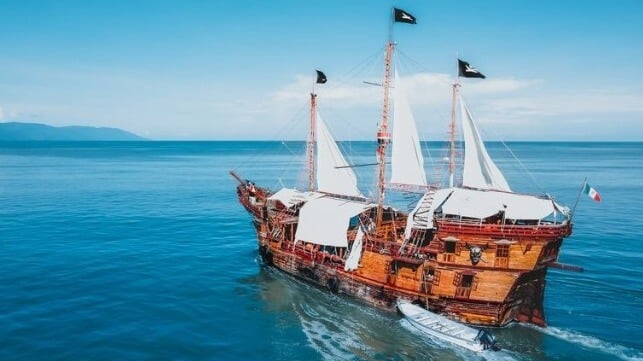The age of methanol and ammonia-powered vessels is quickly emerging, finds a new report from the Global Maritime Forum’s Getting to Zero Coalition. Based on interviews from across the industry, the report finds that both alternative fuels have made significant progress and have “arrived” as shipping fuels.
The Coalition highlights that it has been tracking the process since 2020 and, based on its findings, says it believes both fuels are now ready. This is a significant increase in maturity since the first report in 2020, but they also highlight the need for significant support to get the fuels from the pilot stage to maturity. The report warns that the fuels require a concerted push if they are to be mature enough to rapidly scale from around 2030, in line with the industry’s targets.
Based on the progress, the report this year focuses specifically on methanol and ammonia as marine fuels. It notes that they are relatively early in their adoption, yet have significant potential in the long term. They also shifted the analysis to three stages, starting with proof of concept, then initial scale, and finally maturity.
Methanol, the report notes, is rapidly moving from proof of concept to early scale (more than 60 methanol-capable vessels in operation, 300 more on order, and bunkering available at around 42 ports). Early adopters are finding it relatively safe and straightforward to integrate. Its lower energy density, however, presents operational trade-offs but has not proven a barrier, and new retrofit kits and the relative ease of converting tanks are making retrofitting conventional vessels feasible. They note that methanol is relatively easy to bunker as it can use existing vessels with limited modifications and faces limited concerns from port workers.
The key challenge for methanol to achieve broader scale-up is the availability of green methanol, which makes up only a small share of the total supply and remains challenging for shipping companies to access. Most methanol used on ships to date they note has been grey methanol, with only small volumes of bio-methanol being bunkered since 2023 and the first volumes of e-methanol being bunkered in May 2025. China, they note, is at the forefront of supplies of green methanol, but it is costly and must be accessed through long-term offtake agreements.
Ammonia is acknowledged as less mature, while the report concludes it is rapidly approaching proof of concept as a marine fuel, with engine tests suggesting it can cut tank-to-wake emissions by up to 95 percent. The first ammonia-powered vessels have been successfully piloted, engine testing is near completion, and bunkering trials are underway – none of which have revealed any fundamental barriers to adoption. Operators report confidence in safely operating ammonia-powered vessels and will likely phase the fuel in over time to build operational experience.
One of the big challenges they note for ammonia is mixed reactions from seafarers about the prospects of working on ammonia-fueled ships and hesitations. The Coalition notes that training of crews to operate the first wave of ammonia-powered vessels is underway.
The testing they report, however, is very positive for ammonia. They note the concerns, including nitrous oxide emissions and ammonia slip, saying either could represent showstoppers for the fuel. Early engine tests, the report highlights suggest that operating on ammonia could reduce a ship’s tank-to-wake emissions by between 90 and 95 percent. They said this addresses earlier uncertainty for ammonia-fueled engines.
“We are only at the start of our journey, and technology readiness is not enough by itself. To scale zero-emission fuels at the pace required, we need action from the International Maritime Organization, national policymakers, and the industry to create the right enabling conditions; this will be just as vital as the development of the technology itself."
The key area the report concludes that must be addressed is the fuel supply chain. In the case of methanol, they highlight the need for enhancing the availability of green molecules. The key points for ammonia are validating and rolling out commercial ammonia bunkering at key ports.
To achieve the concerted push required to meet the industry’s decarbonization goals, the Getting to Zero Coalition says targeted policy incentives still need to be provided along with funding to close the cost gap and support early adopters. They also call for establishing robust, harmonized fuel certification systems and aggregating fuel demand to create the investment case for developing the bunkering infrastructure. They also believe that CAPEX grants will be necessary for the investment in bunkering infrastructure, and especially for bunkering vessels.
source: www.maritime-executive.com









